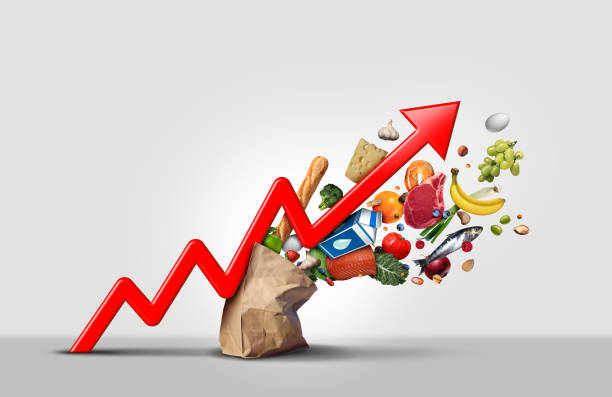Rising consumer prices are a growing problem around the world, making it more difficult for people to afford everything from groceries to their utility bills.
On a global scale, the recent increase in food inflation is attributed to many possible reasons. These include rising oil prices (which raise fertilizer prices and transportation costs), droughts and export restrictions imposed by some major food exporters, and stockpiling in some countries. In addition, pandemic containment measures disrupted production and imports of seeds and fertilizers and caused labour shortages during planting seasons.

Unexpected events have caused great uncertainty and volatility in agricultural markets in recent years. Trade disputes, the COVID-19 pandemic and now the war in Ukraine have added to the natural uncertainty caused by weather and other factors.
Farm commodity prices and consumer food prices are far higher than would have been expected a few months ago, but so are production expenses. The latest NSO statistics show that Malta witnessed food inflation of 8.4% when comparing last February with that of last year. Consumer prices in the 19 countries that use the euro currency rose by an annual rate of 7.5% in March, according to the European Union statistics agency, Eurostat.
While some experts contend that inflation will moderate in the coming months, others aren’t so sure, citing fast-rising food prices as the main issue.
The Ukraine war has resulted in large increases in prices for crude oil and is likely to result in even higher farm production expenses. Fast-rising food prices have been a critical indicator of inflationary pressure. Price increases for meats are particularly notable, with pork and beef up considerably when compared to last year. Dairy products have also increased sharply in price.
Ukraine and Russia have been major grain exporters in recent years. Ukraine’s exports of corn, wheat and barley have averaged about 50 million metric tons per year since 2017, second only to U.S. exports of those three grains. Russia has been the world’s top wheat exporter in recent years. The war in Ukraine has disrupted trade flows and creates the potential for higher prices and uncertainty over the market outlook.
Wheat prices have increased 40% since the start of the war in February. The war has disrupted Ukraine’s planting and harvest seasons, including other crops such as corn, barley and sunflowers; destroyed critical fields, infrastructure and production; and halted shipping from the Black Sea.
For many households across the world, rising inflation poses a significant challenge. Higher prices can erode the value of real wages and savings, leaving households poorer. But these effects are not felt equally.
By exerting a “slow squeeze,” rising inflation has the potential to reduce purchasing power. However, depending on their income level, consumers are in very different financial positions coming out of the pandemic.
Wealthier households are not as vulnerable as low and middle-income households. High-earning consumers were able to build up savings during the pandemic by cutting out expenses for travel, commuting, restaurants, night life, and entertainment. Inflation will be less of a problem for this group of consumers anyway, because they have more flex in their budget. Rising prices will be an irritation, but it won’t tip them into crisis, according to Clark.
On the other hand, lower earners didn’t see that “lockdown boost.” For those working in retail or hospitality, the lockdown period was often disastrous. Low-earning consumers are already on the edge, and price increases could corrode their ability to afford the essentials.
Many turned to Italian Premier Mario Draghi, a former European Central Bank president, for advice. Draghi outlined how the problem hits households given that inflation is rising because raw materials prices are going up, in particular those for foodstuffs. Those are the ones that hit hardest a family’s buying power. Rightly so, Draghi explained that shortages in some raw materials creates a bottleneck in production and forces further price hikes.
As long as inflation remains temporary, governments can respond with budgetary measures, such as payments to help low-income families but if it becomes a longer-term issue, the response will have to be structural. Such a response would require a united front, a united country whereby all stakeholders work together for the benefit of all.